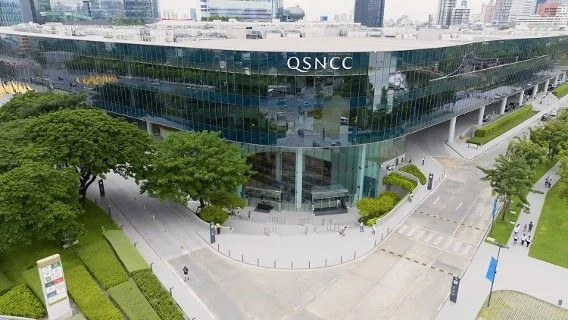Tourism and Sustainable Transformation - Climate Action
For the official World Tourism Day 2025 campaign details, please visit the official website.
In our ongoing journey through the four pillars of Tourism and Sustainable Transformation, we have already explored how Education empowers people to drive change and how Innovation fuels creative solutions for a better future.
For this third instalment in the series, we turn our focus to one of the most urgent pillars — Climate Action — examining how destinations and organisations are rethinking tourism to protect the planet, strengthen resilience, and ensure a sustainable future for all.
Climate Action
Climate Action forms the foundation of a resilient and responsible tourism industry. It is often powered by various areas such as investments in renewable energy, the execution of resilience projects, and the adoption of comprehensive strategies that align environmental priorities with economic and social progress.
By transforming tourism operations and embracing greener practices — from cutting carbon emissions and reducing plastic waste to safeguarding ecosystems — climate action paves the way for healthier environments where communities and tourism can thrive together.
To best illustrate four organisations and destinations that are putting Climate Action into practice in diverse and impactful ways.
Macao Government Tourism Office “Industry Master Plan for Low Carbon Tourism”
The Macao Government Tourism Office (MGTO) is the official public entity that is responsible for creating and implementing Macao's tourism policies to boost its reputation as a quality destination. Its key roles include global promotion, industry regulation, and ensuring high service standards and visitor safety.
According to Maria Helena de Senna Fernandes, Director, MGTO reaffirms their city’s commitment to climate action by launching a series of initiatives, aligning with China’s goals of peaking carbon emissions by 2030 and achieving near-zero emissions in key sectors like electricity and land transport by 2050.
Serving as a blueprint for sustainable tourism development, the Macao Tourism Industry Development Master Plan, published in 2017 and reviewed in 2021 and 2025, integrates the UN’s Sustainable Development Goals, uniting public and private sectors to build a low-carbon destination and promote sustainable living.
Initiatives such as the Macao Green Hotel Award, launched in 2007, have been key to promoting measures like carbon reduction, energy and water conservation, waste minimisation, and pollution control across the industry. When hosting major events, they also offset emissions by purchasing carbon credits from Verified Carbon Standard (VCS) projects.
Moving forward, Macao will advance low-carbon tourism, enhance green infrastructure, and embed sustainable practices, ensuring a tourism-friendly, eco-conscious city for global visitors while safeguarding our planet.”
Tourist Board of Sarajevo Canton “Sustainable Mobility, Green Partnerships, Awareness & Education”
Visit Sarajevo, founded in 2017 to develop and protect tourist values in Sarajevo Canton, works to analyse markets, plan tourism growth, and promote Sarajevo as a highly desirable European destination.
The Tourist Board of Sarajevo Canton recognises that tourism must actively contribute to environmental protection and climate action, based on its three pillars:
Sustainable Mobility – Encourage visitors to use public transport, walking tours, and cycling routes, while also promoting eco-friendly transfer services to reduce carbon emissions.
Green Partnerships – Work closely with local stakeholders to support eco-certified accommodations, responsible tour operators, and community projects that preserve Sarajevo’s natural and cultural heritage.
Awareness & Education – Inform both visitors and residents about responsible tourism practices, waste reduction, and energy efficiency through campaigns and events.
Their long-term vision is to position Sarajevo as a climate-conscious destination, where every guest experience aligns with principles of sustainability, care for nature, and respect for future generations.
Risklayer “Risk Analytics for Climate Resilience”
Tourism Resilience Dashboard
Risklayer’s approach to climate action is grounded in science and focused on impact. They saw a gap: while climate risk data is abundant, practitioners were lacking the knowledge and tools to implement climate actions. Their mission is to transform analytics into actionable insights that empower businesses and communities to strengthen resilience. They begin with the tourism sector, where climate change and disasters pose increasing risks. They work with destinations, hotels, and tour operators to identify vulnerabilities and integrate risk reduction into operations and planning.
As Dr. Trevor Girard, Chief Resilience Officer, notes, through analytical dashboards, resilience assessments and training, they transform complex climate information into clear, practical strategies. Their Risklayer Explorer offers global disaster and climate risk analytics, while their Hotel Resilient platform offers practical tools for hoteliers and tour operators to implement resilience solutions. For them, climate action means more than reducing emissions. It’s about building adaptive systems that allow tourism and communities to thrive despite disruption, fostering a future that is safer, more sustainable, and resilient to climate change.
Queen Sirikit National Convention Center “Renewable Energy & Waste Management”
At Queen Sirikit National Convention Center (QSNCC), their approach to climate action is guided by the belief that real change requires long-term planning and concrete action. They integrate sustainability into their operations through initiatives such as solar rooftop systems to advance renewable energy, food waste disposers that convert waste into organic matter for community fertiliser production, and a circular economy model where they repurchase local produce for use at QSNCC. They also collaborate with government, private, and non-profit partners on waste management to significantly reduce landfill contributions.
To engage their customers, they pioneered Thailand’s first Real-Time Carbon Footprint Tracking Dashboard, enabling event organisers to measure, reduce, and offset emissions. More than actions, they see themselves as a driving force in shaping a new normal, where climate responsibility is embedded in the MICE industry, and they are committed to being a catalyst for change towards a sustainable future.
This article is part three of the PATA blog series celebrating World Tourism Day 2025, which was under the theme “Tourism and Sustainable Transformation”. Across the four articles, PATA delves into the four pillars of sustainable transformation. Check out more of our series: Education, Innovation and Governance









